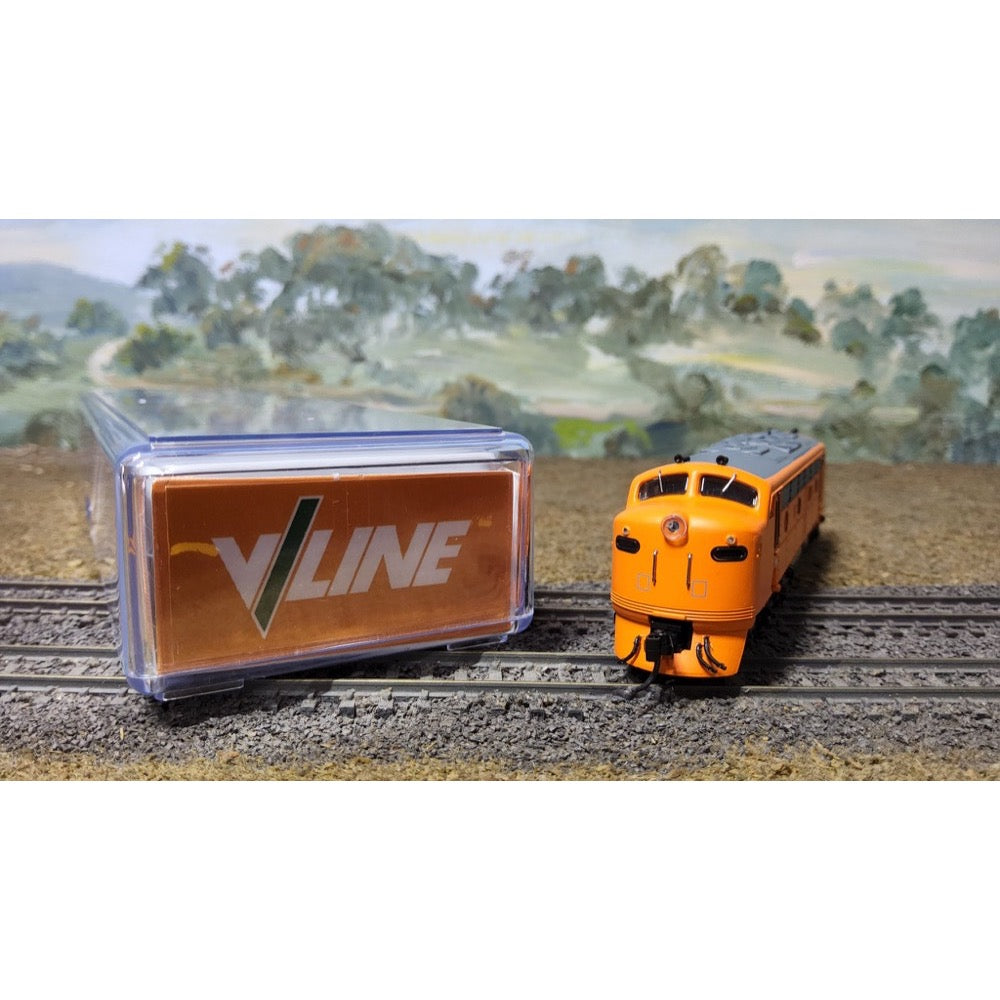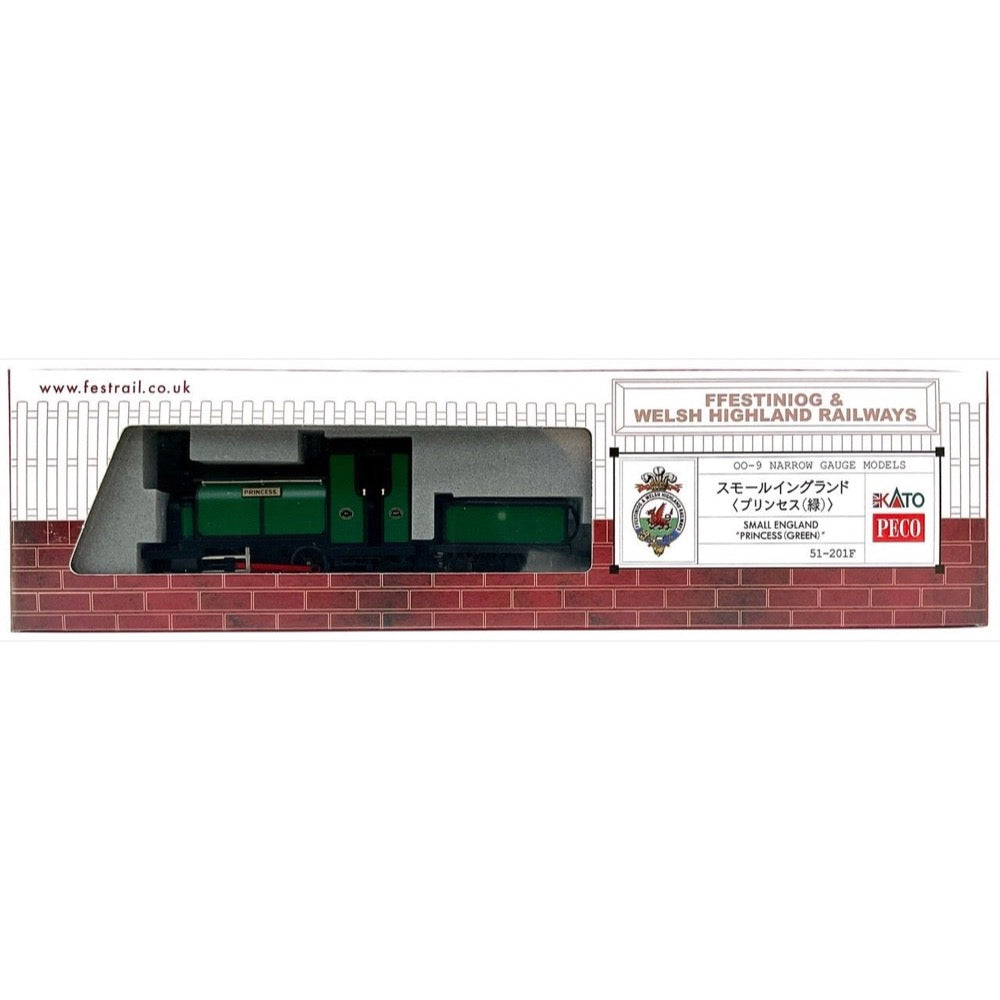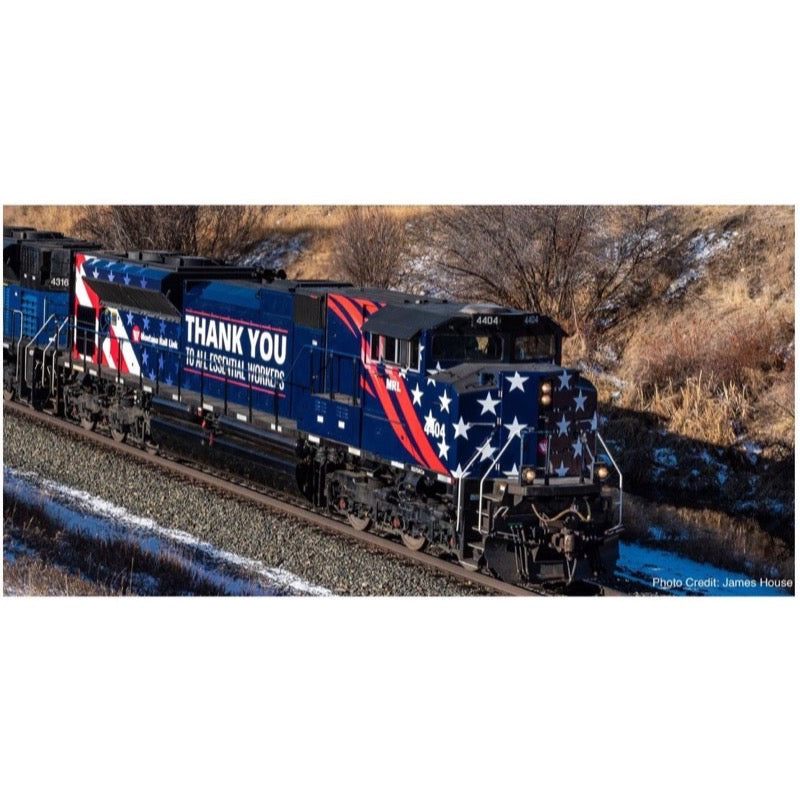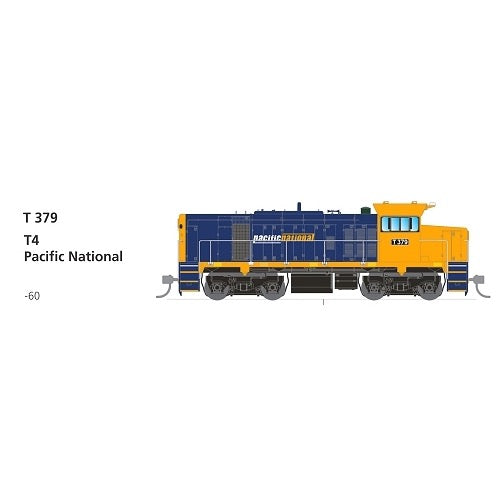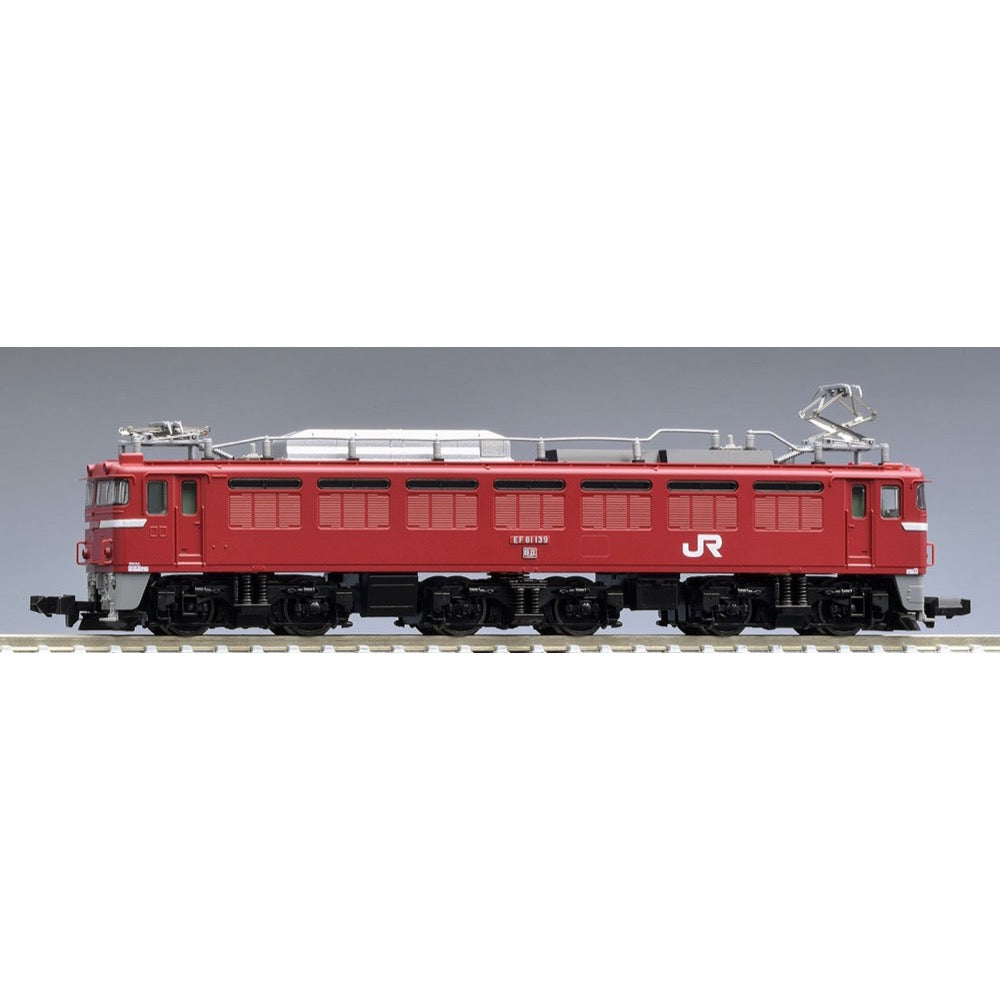
Tomix 7173 N EF81 JR East Japan Spec. Electric Locomotive with Double Head Coupler
The EF81 type is an electric locomotive that was introduced in 1968 and is compatible with direct current and 50Hz and 60Hz alternating current.
From the 137th onwards, vehicles with a awning on the front window were introduced, and the 133rd to 136th vehicles were also modified to have one installed in later years. The
EF81 type owned by JR East has had its paint color changed from rose pink to Red No. 2, and some vehicles have been modified to be equipped with double-headed couplers.
In addition, the electric heating indicator lights on the sides of the car body were removed from around 2022.
The EF81 type owned by JR East used to pull many regular passenger trains such as the "Hokutosei" and "Akebono", but is currently used to pull special trains such as the group-only special train "Cassiopea Journey" and supply trains.
Features
- The side where the electric heating indicator light has been removed is reproduced with a new production
- The number plate has a shape that makes the cut edges less noticeable
- Number plates come as separate parts "EF81-136, 139, 140, 141"
- Printed head mark included "Cassiopeia"
- Radio antenna already installed
- See-through driver's cab is reproduced
- Front handrail (vertical) comes as separate part
- Headlights are equipped with a constant-on board and have an ON-OFF switch
- Headlights are illuminated by incandescent color LEDs
- Uses power with flywheel
- Uses black bogie frame and black wheels
- Uses wheels with integrated plate wheel center
- Includes double-headed TN coupler
- Uses M-13 motor
Accessories
- Runner parts: Number plate (for front)
- Runner parts: Number plate (for side)
- Runner parts: Manufacturer's plate
- Runner parts: Handrail
- Runner parts: Head mark
- Runner parts: Whistle cover, signal flare
- Parts: Double-headed TN coupler
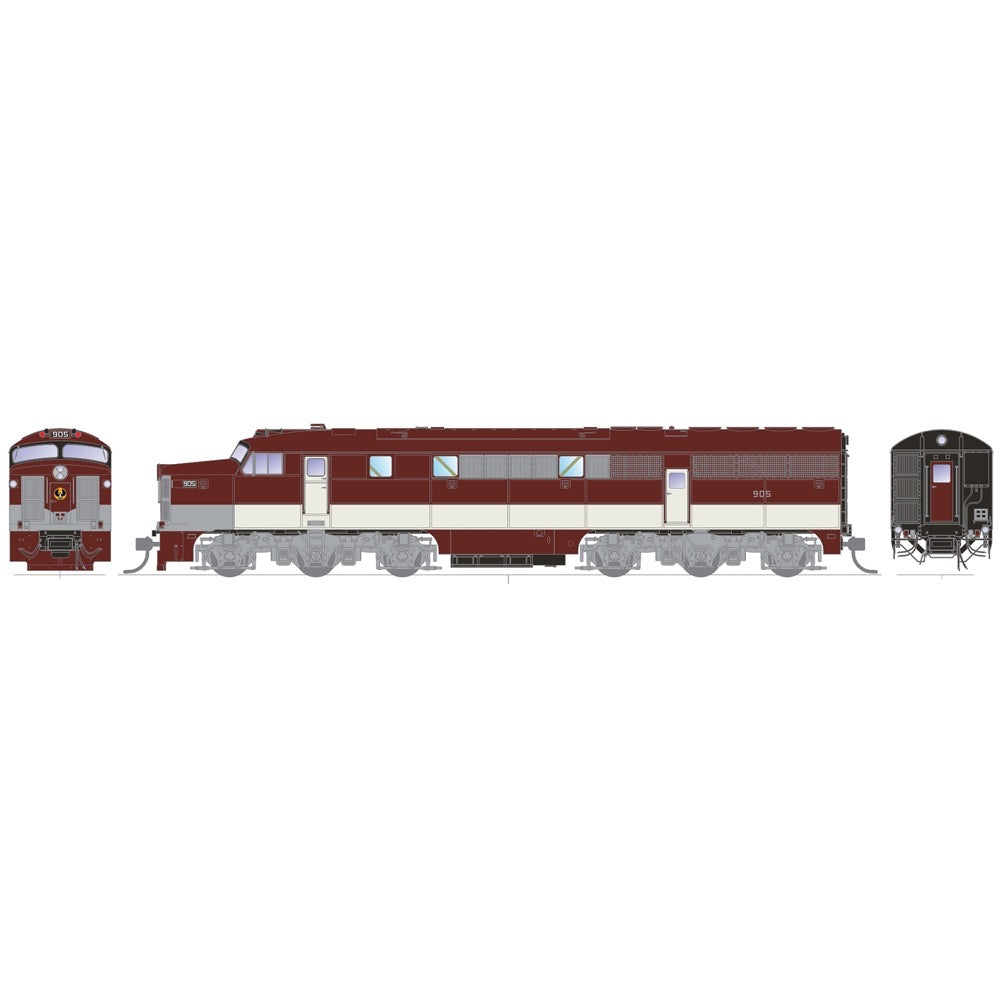
SDS Models HO SAR 900 Class Locomotive 905 DCC Sound
Arguably the first of the streamliners, and Australian built mainline locomotives. The SAR 900 class diesel-electric locomotive were designed and built in-house by the South Australia Railways, they used English Electric V16 engines. English Electric also supplied the generators and traction motors.
The 10 units were delivered between 1951 and 1953, all were out-of-service by mid 1985.
900 Lady Norrie is preserved by the National Rail Museum, she also ventured across into Victoria to appear at Spencer Street station for the Aus Steam 88 festival. 907 and 909 were operated by SteamRanger tourist railway until 1995.
We have produced 4 body variants for the 900 class:
- Early service without large forward roof hatch with single Dynamic Brake fan shroud.
- Early service with large forward roof hatch with twin Dynamic Brake shroud.
- Late service with front twin sealed beam headlight.
- Preservation with front and rear twin sealed beam light.
Features
- Highly detailed Ready-to-Run HO gauge model
- Precisely tooled plastic body (ABS)
- Genuine Kadee scale head whisker coupler
- Separately applied handrails and detail parts
- 5-Pole skew wound electric motor and dual flywheels
- All wheel drive and electrical pickup
- LED head and marker lights
- All models come standard with an MTC 21 pin motherboard
- Exclusive sound by DCCSound
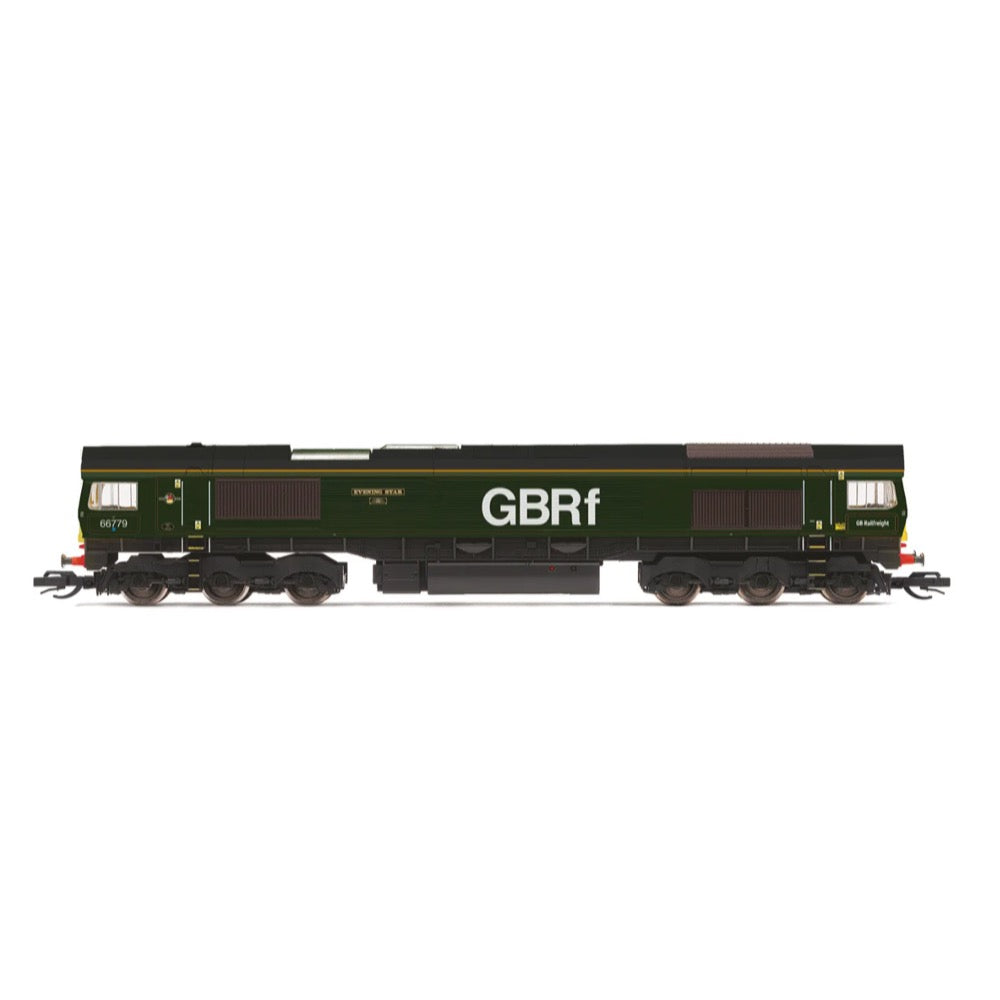
Hornby TT3018M TT GBRf Class 66 Co-Co 66779 Evening Star
This model will feature directional and cab lighting. Night and day headlights will also be included.
All variants of the Class 66 lighting have been tooled for both UK and European variants. The headlights will be prototypical for your model.
All the Class 66 models have 12 axles for the current pick-up and both bogies are motor-driven. The UK variants of the Class 66 will not be fitted with traction tyres, but tyred wheelsets are available as accessories.
European variants will be fitted with one traction tyre per bogie ex-works.
History
The Class 66 is one of the most ubiquitous diesel classes in the UK. 480 examples were built for the UK market with additional examples being imported from other countries pools to bolster the amount in service in the UK. The Class 66 is a progression of the privately commissioned Class 59 that Foster Yeoman had constructed to replace their aging and failing BREL locomotives. The Class 66 shares the same body as the 59 but has uprated internals.
In May 1996 EWS placed an order for 250 units to be built in London, Ontario. These would set EWS back £375 million, with the first units arriving relatively quickly in early 1998. The locomotives would be in service from the point they touched down at Newport Docks, with the locomotives shipped already filled with water and fuel. The last such example arrived in the UK in spring 2016.
66779 is the last example of the class built for the British railways, and it has the plaque, name and livery to prove it. Named ‘Evening Star’ after the last steam locomotive built in Britain the locomotive is presented in a lined brunswick green livery, a livery commonly seen on express passenger steam engines and as was on the 9F Evening Star when it was outshopped. The locomotive is in GB Railfreight service and will be donated to the National Collection upon the locomotives withdrawal.
Specification
- Item Length - Without Packaging (cm): 17.4
- Item Height - Without Packaging (cm): 3.3
- Item Width - Without Packaging (cm): 2.3
- Item Weight - Without Packaging: 0.18
- Item Scale: 1:120 Scale
- Finish: Painted
- Colour: Green
- Gauge: TT
- DCC Status: Next 18 Socket (NEM 662)
- Operator: GBRf
- Designer: Electro-Motive Diesel
- Wheel Configuration: Co-Co
- Livery: BR Green with GBRf Branding
- Minimum Curve (mm): Radius 2
- Motor: 5 Pole
- Number of Parts: 1
- Class: Class 66
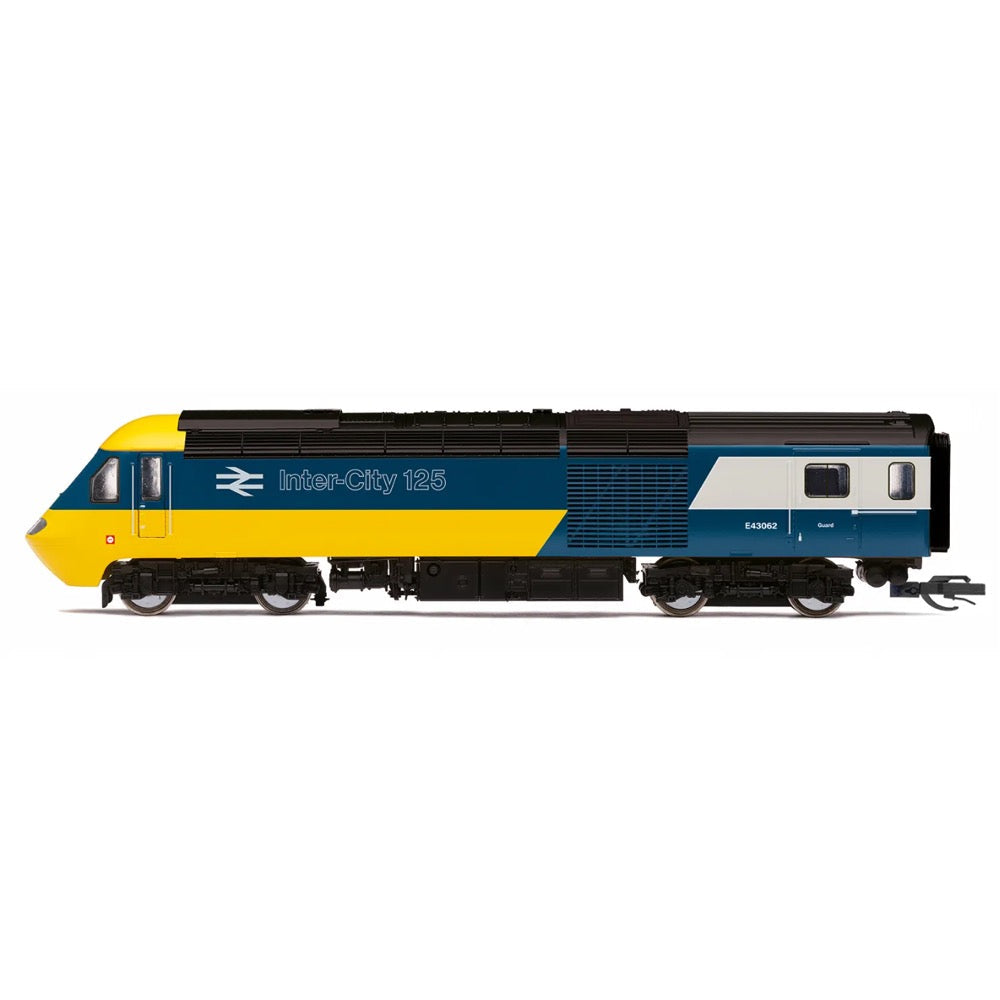
Hornby TT3021M TT BR Class 43 HST Train Pack
Officially the fastest diesel trains in the world, the InterCity 125 High-Speed Trains were introduced by British Rail in 1976, operating 125mph services on the Great Western Main Line and the East Coast Main Line before being introduced to other lines as their use spread.
When originally built by BREL at Crewe Works the InterCity 125 units, consisting of a pair of Class 43 power units and a rake of Mk3 coaches, were considered to be diesel multiple units and allocated as Class 253 to the Western Region and Class 254 for the Eastern Region, as it was envisaged that the sets would remain in fixed formation.
The Class 43s would begin to see a reduction in their use as electrification became more widespread around the UK, with their services no longer being required on the East Coast Mainline. With the introduction of the Class 800 sets the Class 43 has been relegated to regional services with Scotrail and GWR being the two largest operators of the Class in 2022. Due to the locomotives status as the fastest diesels in the world many examples have been preserved.
Specification
- Item Length - Without Packaging (cm): 15.5
- Item Height - Without Packaging (cm): 3.3
- Item Width - Without Packaging (cm): 2.3
- Item Weight - Without Packaging: 0.2
- Item Scale: 1:120 Scale
- Finish: Painted
- Colour: Blue
- Gauge: TT
- DCC Status: Next 18 Socket (NEM 662)
- Operator: BR
- Designer: Sir Kenneth Grange
- Wheel Configuration: Bo-Bo
- Livery: BR Blue
- Minimum Curve (mm): Radius 1
- Motor: 5 Pole
- Number of Parts: 1
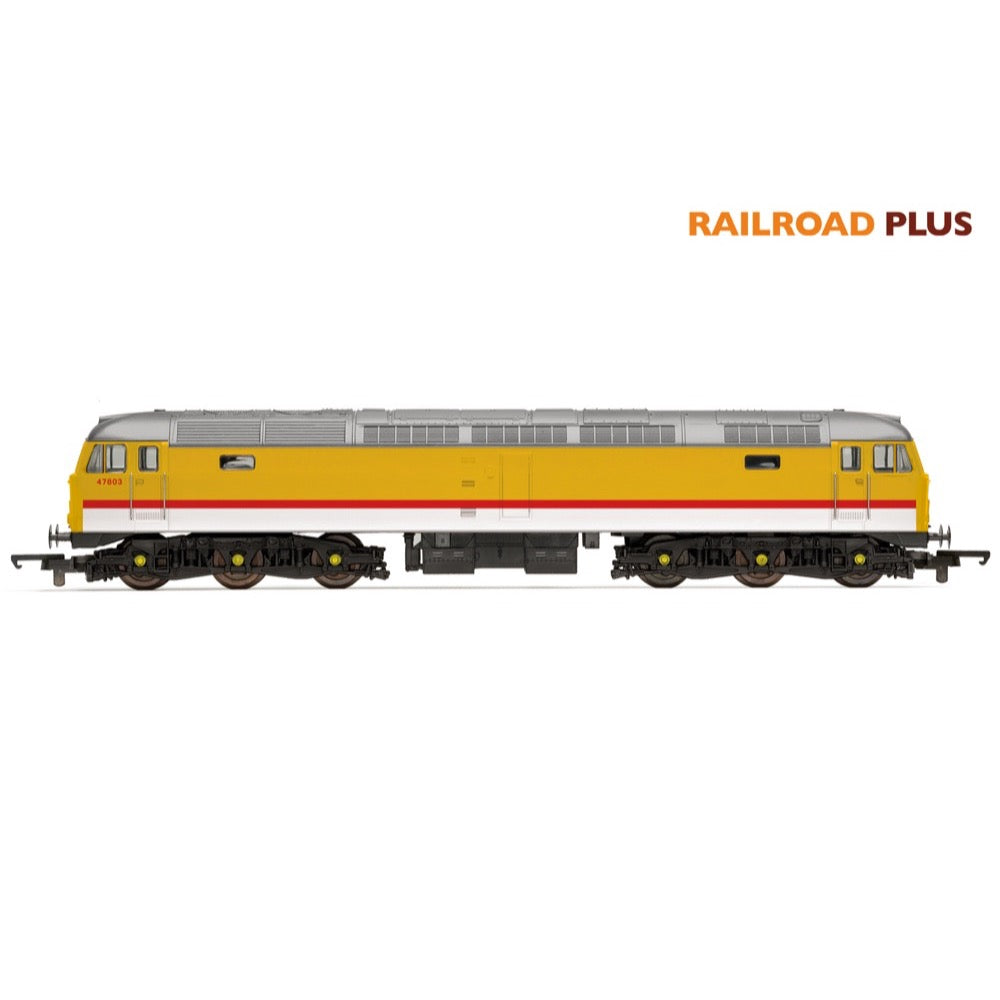
Hornby R30186 OO RailRoad Plus BR Infrastructure Class 47 Co-Co 47803
The British Rail Class 47 is a class of British railway diesel-electric locomotive that was developed in the 1960s by Brush Traction. A total of 512 Class 47s were built at Crewe Works and Brush's Falcon Works, Loughborough between 1962 and 1968, which made them the most numerous Class of British mainline diesel locomotive. They were classified as Type 4s.They were fitted with the Sulzer 12LDA28C twin-bank twelve-cylinder unit producing 2,750 bhp (2,050 kW) - though this was later derated to 2,580 bhp (1,920 kW) to improve reliability - and have been used on both passenger and freight trains on Britain's railways for over 50 years. Despite the introduction of more modern types of traction, a significant number are still in use, both on the mainline and on heritage railways. As of October 2016, 81 locomotives still exist as Class 47s, with further examples having been converted to other classes; 30 retain "operational status" on the mainline.By 1986, only five of the original 512 locomotives had been withdrawn from service, all because of serious accident damage. However, with work for the Class declining due to the introduction of new rolling stock and spare parts becoming difficult to source, some inroads started being made.The first locomotives to be targeted were the non-standard pilot batch of 20, now numbered 47 401-47 420. Three locomotives were withdrawn as life-expired in February 1986 and the remainder of the batch that had not recently been overhauled followed in the next two years. All 20 were withdrawn by 1992.Meanwhile, BR drew up a 'hit-list' of locomotives for early withdrawal, mainly including those with non-standard electrical equipment, known as series parallel locomotives. In the outset, withdrawals were slow, mainly due to the surplus of spare parts and new flows of freight traffic which required extra locomotives; only 61 locomotives had been withdrawn by the end of 1992. However, with the introduction of new locomotives, the rate of withdrawal quickly rose, with 86 more 47s reaching the end of their lives in the next three years. With most of the non-standard locomotives withdrawn, the reduction of the fleet again proceeded more slowly. The privatisation of British Rail also produced new independent rail companies needing available traction until they could order new locomotives. From 1996 to 2006, an average of around fifteen locomotives per year were taken out of service.
Specification
- Item Length - Without Packaging (cm): 25.1
- Item Height - Without Packaging (cm): 5
- Item Width - Without Packaging (cm): 3.5
- Item Weight - Without Packaging: 0.23
- Item Scale: 1:76 Scale 00 Gauge
- Finish: Painted
- Colour: Yellow
- DCC Status: DCC Ready 8 pin socket
- Operator: BR
- Designer: Brush Traction
- Livery: BR Infrastructure
- Minimum Curve (mm): Radius 2
- Motor: 5 Pole Skew wound
- Number of Parts: 1
- Class: Class 47
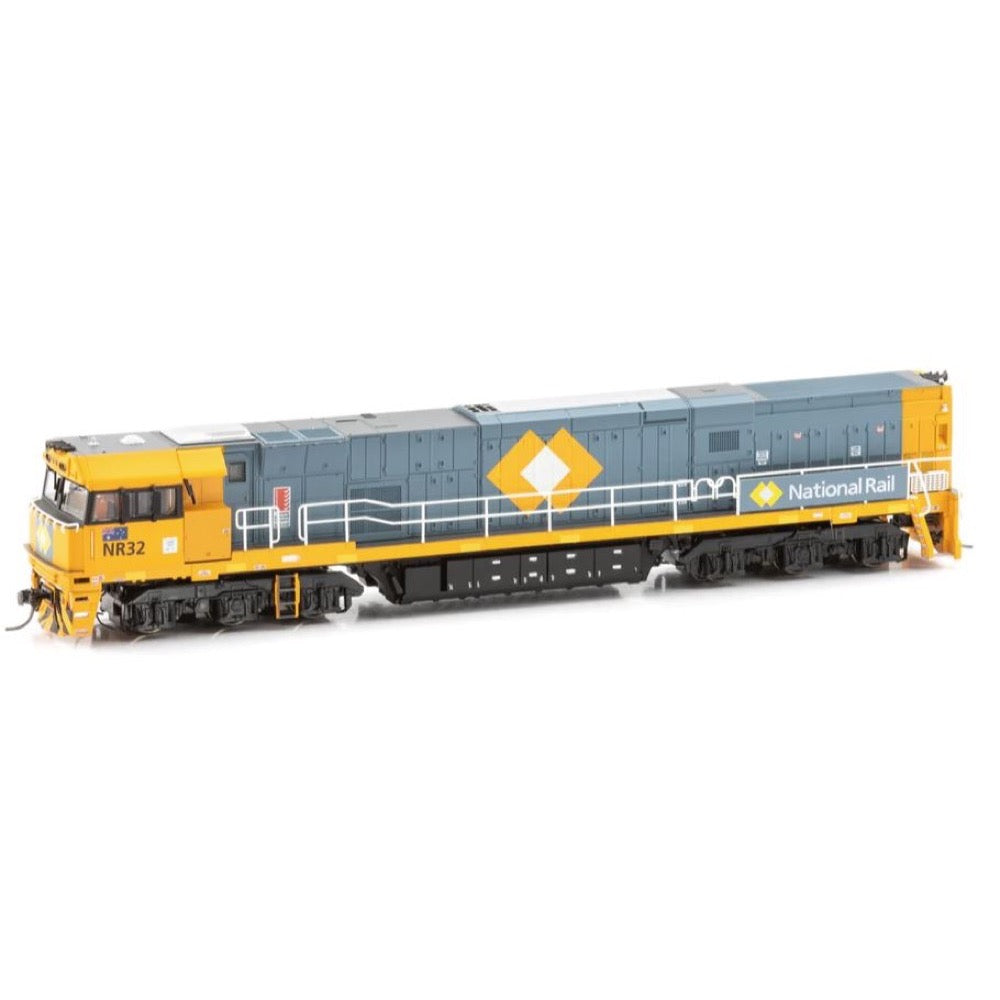
SDS Models NR503 NR32 National Rail DCC Sound
NR CLASS LOCOMOTIVE NR 32 NATIONAL RAIL
Features
- Highly detailed Ready-to-Run HO gauge model
- Precisely tooled plastic body (ABS)
- Genuine Kadee scale head whisker coupler
- Separately applied handrails and detail parts
- 5-Pole skew wound electric motor and dual flywheels
- All wheel drive and electrical pickup
- LED headlights, marker lights, number boxes and ditch lights
- All models come standard with an MTC 21 pin motherboard
- Exclusive sound by DCCSound
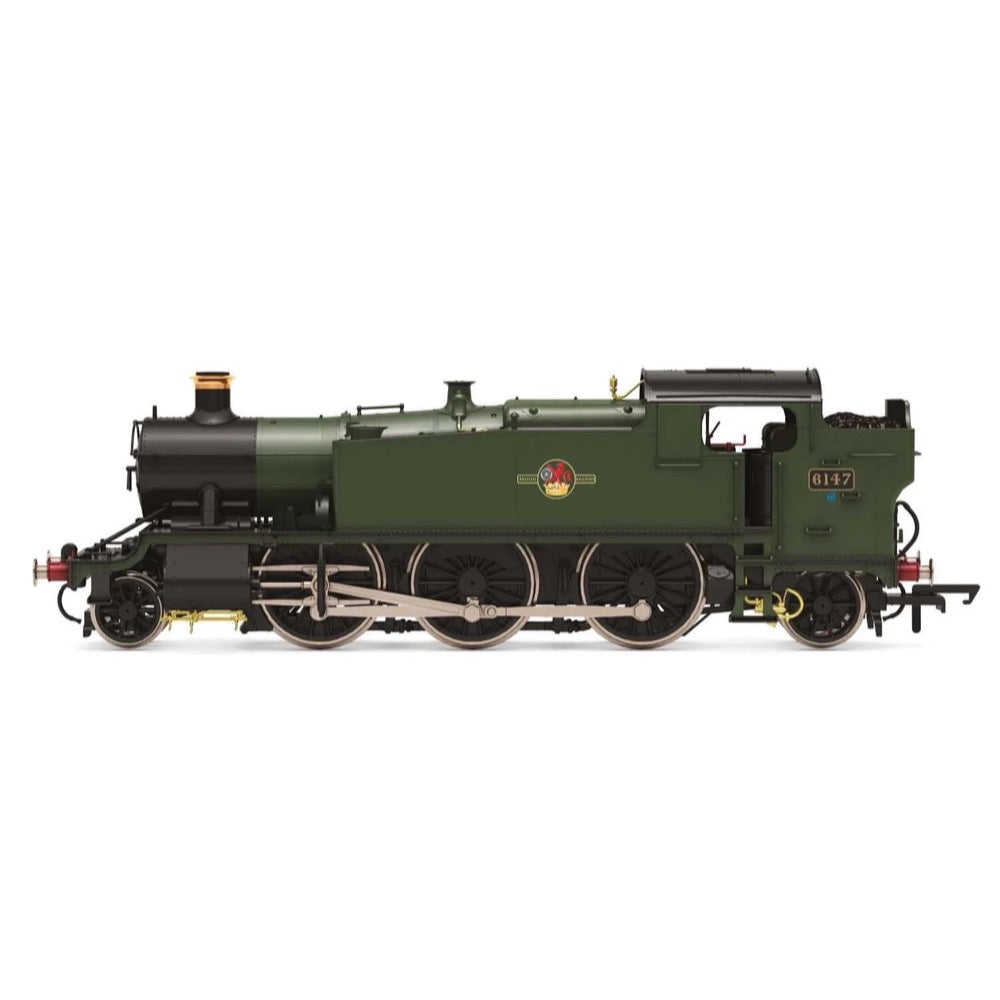
Hornby R3850 OO BR 61XX Class Large Prairie 2-6-2T 6147
In 1903, George Churchward, Chief Mechanical Engineer of the Great Western Railway, embarked upon his locomotive improvement scheme with three types of 'standard' class engines, of which his 2-6-2T design was destined to become probably the GWR's most useful locomotive, lasting in traffic until the last month of Western Region steam operations in December 1965.
The Class prototype, No. 99, spent two years working across the GWR system and the lessons learnt from its performance were incorporated into the thirty-nine production locomotives of the 3100 Class, introduced during 1905/1906. At eighteen tons, they were designated as red route engines, initially being able to cover 42% of the GWR network. In 1927 experiments were undertaken to reduce the weight distribution of the class leading to the locomotives gaining blue route clearance and being renumbered in the 5111-5149 range, changing the class designation to 5100 in the process. At the same time as the 3100 class locomotives were being converted to 5100 class, further locomotives to the same design and blue route designation were built, designated as the 5101 class. 140 locomotives were built between 1929 and 1949, incorporating all the modifications applied to the 3100 class.
The need for new locomotives to work accelerated London suburban services at the beginning of the 1930s led to further development of the 5101 class, an uprated Standard 2 boiler being fitted to seventy new locomotives built between 1931 and 1935. Numbered in the 6100- 6169 range, they were designated as the 6100 class, being stationed at every London depot and replacing all other passenger tank locomotives except the auto-train fitted engines. It was only the reorganisation of the London suburban timetables in 1955 that led to some locomotives being transferred away from London and it was these examples that survived to the end of steam on the Western Region.
Built at Swindon Works under Lot No. 278 in January 1933, Diagram A10 Class 6100 'Large Prairie' No. 6147 entered traffic with the London Division, remaining there until 3 December 1960. From London, 6147 was moved to Bristol, first at St. Philips Marsh and then at Bristol Barrow Road, before moving to Westbury in November 1963 and the locomotive ended its working life at 85A Worcester Shed in January 1966, having moved there in January 1964.
Specifications
- Item Length - Without Packaging (cm): 16.5
- Item Height - Without Packaging (cm): 5
- Item Width - Without Packaging (cm): 3.5
- Item Weight - Without Packaging: 0.22
- Item Scale: 1:76 Scale 00 Gauge
- License: No
- Finish: Painted
- Colour: Black
- Gauge: OO
- DCC Status: DCC Ready 8 pin socket
- Operator: BR
- Designer: Collett
- Wheel Configuration: 2-6-2T
- Livery: BR Green
- Minimum Curve (mm): Radius 2
- Motor: 5 Pole Skew wound
- Number of Parts: 1
- Class: Large Prairie'
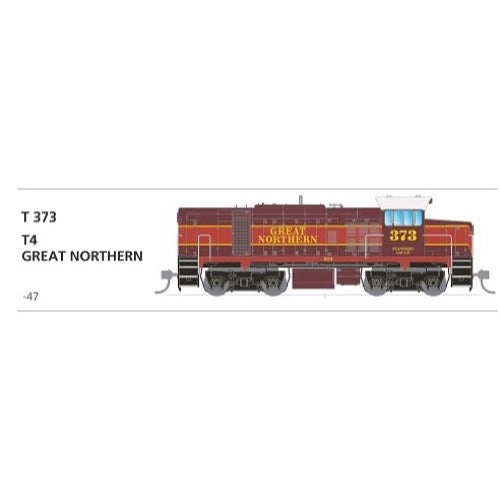
SDS Models HO T373 Great Northern T4 Series T Class Locomotive
SDS Models HO T373 Great Northern T4 Series T Class Locomotive


